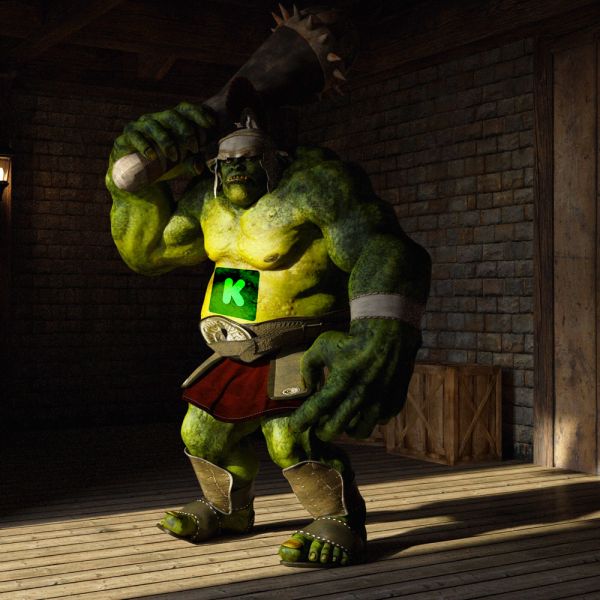Kickstarter Behemoths: Five Things the Highest Funded Tabletop Campaigns Have in Common

When looking through the myriad examples of unsuccessful Kickstarter campaigns, a potential creator could be discouraged and decide not to launch their own project. However, equally as harmful is when first-timers see the few anomalies and think something like, "Well, if Exploding Kittens could raise millions of dollars, then surely I will get rich off of my game idea!" Or, perhaps they attribute these successes to mere luck. But there is a lot that goes into a successful Kickstarter campaign. The amount of time, effort, and stress that goes into making a campaign shine is unfathomable to those who have never run a project. So, what does it take to create a mass hit?
What do the big hits have in common?
1) They have an audience
CoolMiniOrNot has seen a large amount of enormous successes on Kickstarter and the reason why is clear — they make games people want. They continue to deliver on their promises of what their campaigns will be and fans of their games keep coming back. They have built up a large audience of gamers who want to purchase their games, which is great for the early traction that is needed to get noticed by Kickstarter's algorithms.
Exploding Kittens had The Oatmeal's enormous base of fans to share their game with, as well. As of the time of writing, TheOatmeal.com is estimated to receive over 6.6 million visitors per month.
Kingdom Death didn't even raise $2,000 on their first campaign in 2009, failed their second, and had such a large audience that they raised over $2 million on their third. The game received such high accolades that the fourth campaign Kingdom Death: Monster 1.5 went on to raise over $12 million at the beginning of 2017. As they built their audience (through creating great products that provided value to their backers) they were able to generate more sales and become the "break out successes" that they were.
These campaigns were not overnight successes. The creators worked for years to build the following needed to form such impressive and large scale campaigns.
2) They know marketing
An audience is worthless if not utilized. Each of these campaigns are led by entrepreneurs that understand the power of marketing. Each of these campaigns surely dumped significant amounts of money into advertisements and getting people to see their products. Most had reviews and players seeing and playing the game well before the Kickstarter campaiwas ever created. Additionally, they were highly successful at calling upon their fans to assist with backing the project.
Kingdom Death: Monster 1.5's Kickstarter campaign has a link to join their email list (which shows they're cultivating an audience not only for this game but likely subsequent ones as well). They also ask where a subscriber heard about them so they can focus their advertising on platforms that are converting. These are common marketing strategies that any new publisher should follow — gathering an email list is arguably the most important step in building an audience.
3) They have great artwork
Part of successful marketing is around packaging and design. There are few products in the gaming space that can get by on using poorly illustrated covers. The artwork for all the top Kickstarter campaigns shines through with a polished professionalism.
For Exploding Kittens, fans of The Oatmeal were familiar and comfortable with this art style already, so it was easy for them to purchase a game illustrated by the creators of their favorite web comic. Kingdom Death's minis are superb, and the game's box has a simple but elegant look like you might find from Apple.
4) They're accessible
Accessibility is about making it easy for a potential consumer to purchase products on the campaign. One step to making the campaign accessible is delivering consistent quality on current campaigns. CoolMiniOrNot doesn't decrease their component quality or release poorly designed games to make more money. They are conscious of their brand image, which makes their campaigns safer for their fans. If their fans know they are going to be treated right then they'll continue coming back for more.
On the other hand, if a creator burns their previous backers, it is tough to get people to support another project as they will have to overcome negative publicity from the former campaigns.
Another step of accessibility is organizing the Kickstarter campaign in a way that it is easy to see how much the game will cost, what shipping will cost and where the game ships, how the game plays, etc.
Finally, most keep their reward pledges to a minimum. Kingdom Death: Monster 1.5 likely has the most of any of the most successful campaigns, at 22 pledge levels. But first time creators should consider limited reward levels to 5 or fewer for simplicity.
5) They create engagement with their audience
These top campaigns also encourage their fans to engage with others who might not have seen the campaign otherwise. This exposes their game to larger populations of people and increases backing. Exploding Kittens had social goals to further persuade backers to share the campaign, but all successful campaigns make it easy for potential backers to do this. Additionally, as a campaign gets more popular, the amount of people talking about it will organically grow as well.

Launching your own campaign? Here are some tips for a successful takeoff.
1) Build Your Audience — Go to conventions, gather an email list, send your game to reviewers, post regularly on BoardGameGeek and other industry sites, join discussions in Facebook groups, and create social media accounts.
2) Play More Games — Playing games is a great way to understand gameplay better and learn what is trending in the industry, and can also be utilized for social media posts.
3) Study Marketing — If you're not a marketing professional then read some books, study, and reach out to others in the industry to learn how they market. The board game industry is fairly tight knit and most people are incredibly helpful as long as the advice is taken to heart and implemented. Though, if one gets aggressive or hostile with constructive criticism or doesn't heed suggestions, then industry folks likely won't continue devoting their sparce time to assisting that person.
4) Don't Skimp on Branding — One does not necessarily have to spend crazy amounts of money on branding and artwork. However, a plethora of games get subpar artwork either because it is incredibly cheap or free. This does not work well for Kickstarter. Games with gorgeous art typically perform much better. It is possible to find great artists who are just getting their start who will work cheap and provide excellent results.
5) Make It Easy For Fans to Reach You — Give potential fans of your brand every opportunity to contact you and find you, especially online. If someone plays your game at a convention it should be super simple for them to find your accounts online. If they search for you on social media but can't immediately find you, they might drop off and never learn of your Kickstarter, whereas if they follow you, you can keep in touch and ask for their support when the time comes.
If you're looking to start a campaign please feel free to reach out. I am more than happy to discuss anything that I know with anyone interested in joining the industry. It is a ton of work to start a publishing company and a tough path that is not right for everyone. But if you feel you fit the bill and want to start a business, then most in the industry will do everything in our power to help you be successful.
Are there any tips we missed or want to share your thoughts on the article? Share them with us on Twitter @AtherisAndrew and @CasualGameRev with #CGRBehemoths






